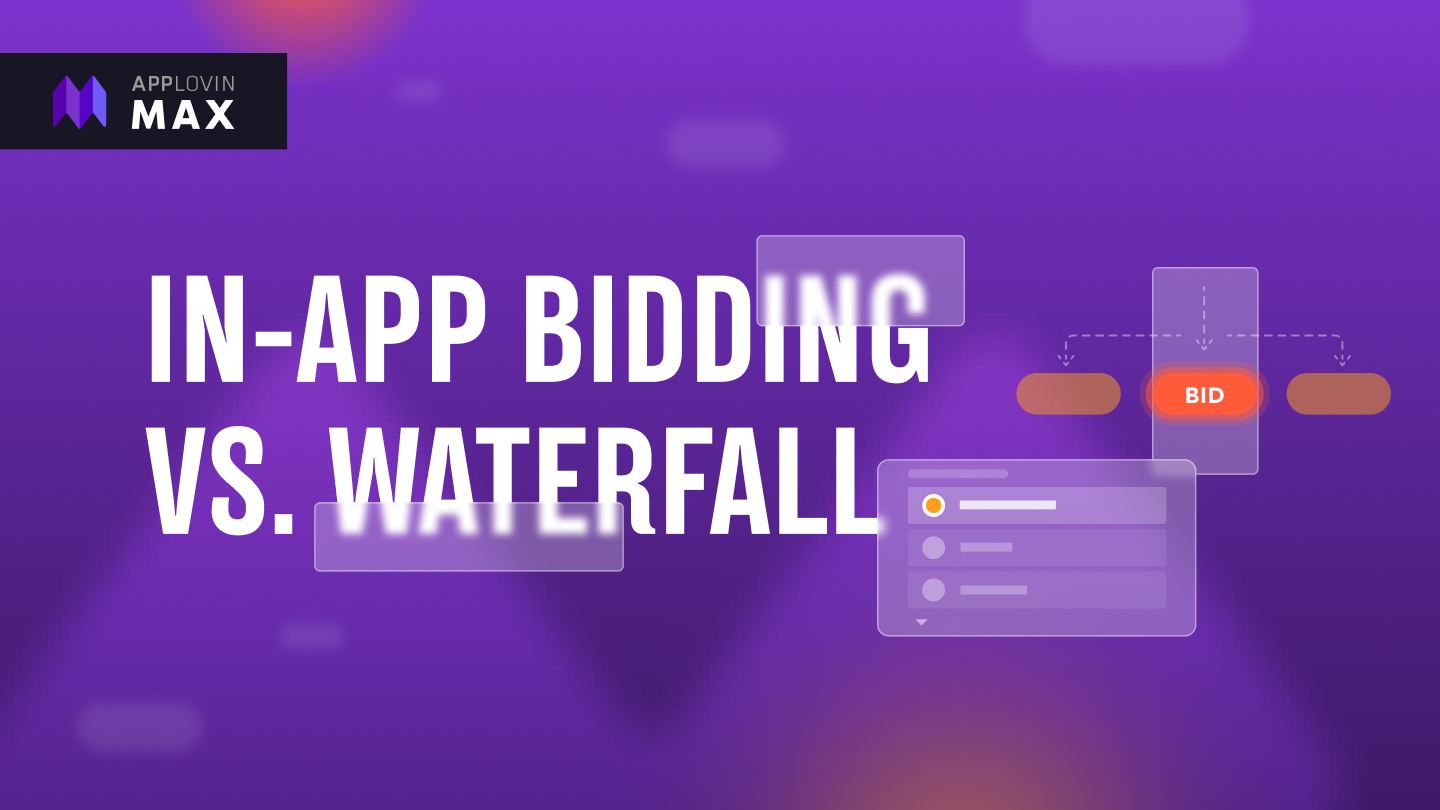In-app Bidding, Monetization
MAX Bidding: What the shift to in-app bidding means for monetization
Jun 5, 2024

In-app Bidding, Monetization

In-app advertising is expected to generate nearly $353 billion in 2024, comprising over 40% of all digital advertising revenue. That growth is expected to continue at a rate of over 9% year over year through 2027. Considering that smartphones have been part of our lives for less than two decades, that’s impressive.
As the mobile industry matures, it also gets more sophisticated and more efficient. Improved technologies, like in-app bidding (also known as header bidding on the web), mean better monetization opportunities for both advertisers and publishers.
MAX has always been at the forefront of in-app bidding, championing a transparent and competitive environment. That said, we know that there will be questions during this transition. So, here’s an in-depth explanation of what this change from waterfall to in-app bidding means for your app business, helping you understand the benefits.
The waterfall model that used to be prevalent across the industry short-changed both advertisers and publishers. Because advertisers were ranked based on their past performance rather than current data, all interested advertisers were not always able to compete for inventory. Because the highest-bidding advertisers didn’t necessarily win the auction, publishers were missing out on potential revenue.
With real-time bidding, not only do all advertisers have the opportunity to win the auction, but the one who wants the impression the most—aka, the highest bidder—always wins. So all advertisers have a fair shot, and the publisher earns a higher eCPM. Since the industry has embraced real-time bidding, publishers have reported an increase of 60% in overall app revenue.
Transitioning from waterfall to in-app bidding does require an initial investment in time and resources, particularly as publishers test for incrementality and adjust to the new system. However, the mid-to-long-term benefits outweigh these initial costs.
A bidder-only stack with competitive networks increases the bid density and introduces incremental demand that drives higher revenue for each impression opportunity. This diversity is crucial because not all buyers target the same impressions or users. Including brand demand, along with performance, creates a well-balanced auction that will maximize the monetization opportunities across all ad formats, geos, and types of users.
In the months ahead, we plan to integrate additional network partners on our MAX. This expansion is designed to further increase competition among bidders, which ultimately benefits publishers with higher yields.
Our commitment to enriching the bidder landscape underscores our dedication to amplifying revenue opportunities for publishers while maintaining a fair and efficient bidding process for buyers
One major benefit of bidding is that the oRTB protocol offers a standardized set of data signals, enabling bidders to refine their bidding strategies and compete more effectively. By leveraging detailed insights provided in loss notifications (second highest bid, auction_price, loss reason), each bidder can optimize their approach, ensuring a more dynamic and competitive auction environment.
These signals don’t exist in a traditional waterfall environment. As publishers enable more bidders, coverage for these data points increases further. A network’s lack of these data points within the traditional waterfall means it isn’t able to bid the highest possible outcome on an available impression opportunity. In many cases, it could also mean that the network won’t even have a chance to compete in that auction due to how the waterfall failover methodology works. These detailed signals also enable advertisers to better target ads, delivering a more relevant experience to app users. This, in turn, helps publishers improve overall retention and LTV.
The transition from a traditional waterfall to a bidding environment represents a significant shift in how ad inventory is bought and sold, and not all networks adapt at the same pace or with the same success. This discrepancy largely stems from the unique internal decision-making processes that each network uses to determine the most appropriate ad for every user and impression opportunity.
In the traditional, floor-based model, networks had limited opportunities to present their ads, confined by predetermined slots and prices. The bidding model democratizes the process, allowing them to compete for every available impression. This open competition requires networks to adjust their strategies, moving away from reliance on predefined zones and towards making real-time, committed bids for each ad impression.
As networks navigate this transition, the gap in performance between partners highlights the varying degrees of adaptability and sophistication of their bidding algorithms. Bidding success requires not just technological adjustments but also a strategic overhaul of how networks value and compete for impressions.
At AppLovin, we continue to work closely with each partner to help them transition seamlessly. Bidding-optimized networks result in a more robust and competitive auction environment, leading to more effective monetization strategies. Ultimately, this results in higher revenue and greater efficiencies for publishers.
Partnering with a mediation platform like MAX while leveraging powerful developer tools and these proven best practices will allow publishers to maximize the advantages of in-app bidding while streamlining ad monetization. This will free up valuable time for teams to focus on delivering the best ad experience for their users – and we’re 100% here for it.